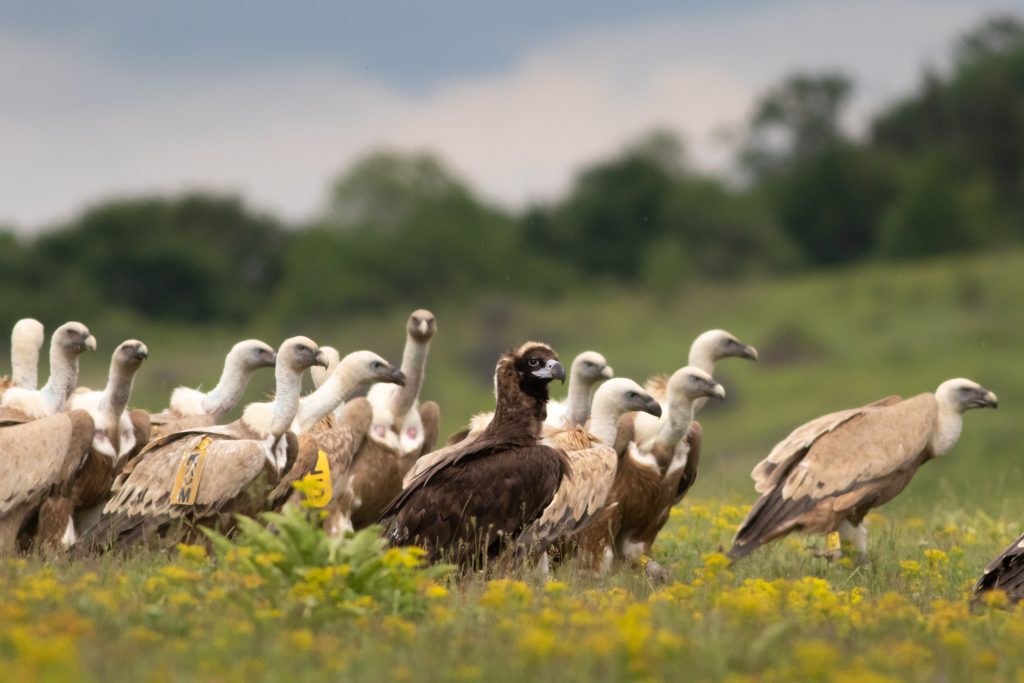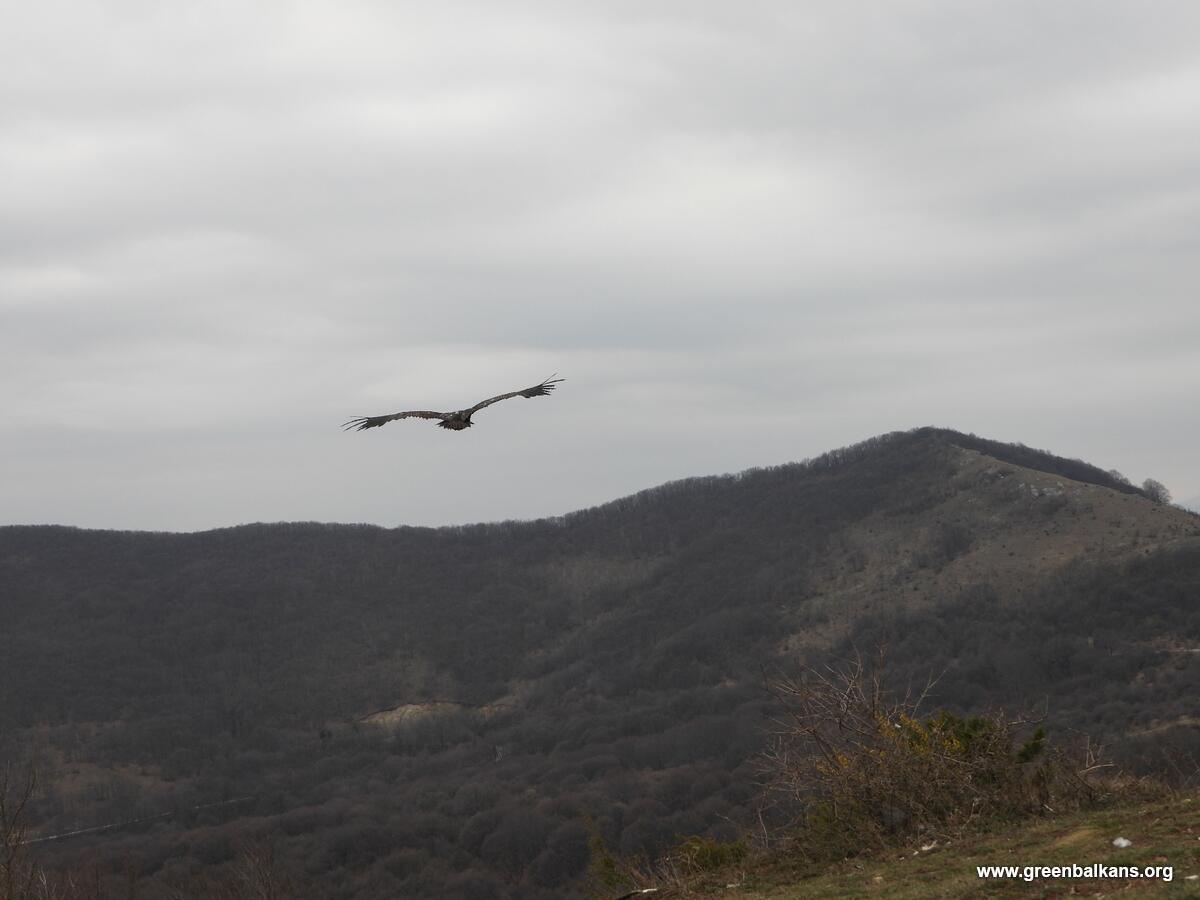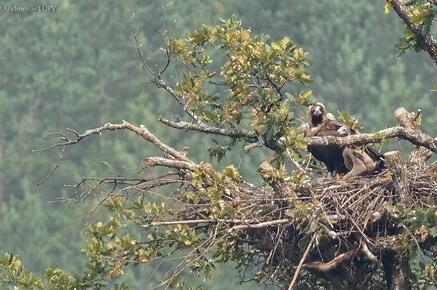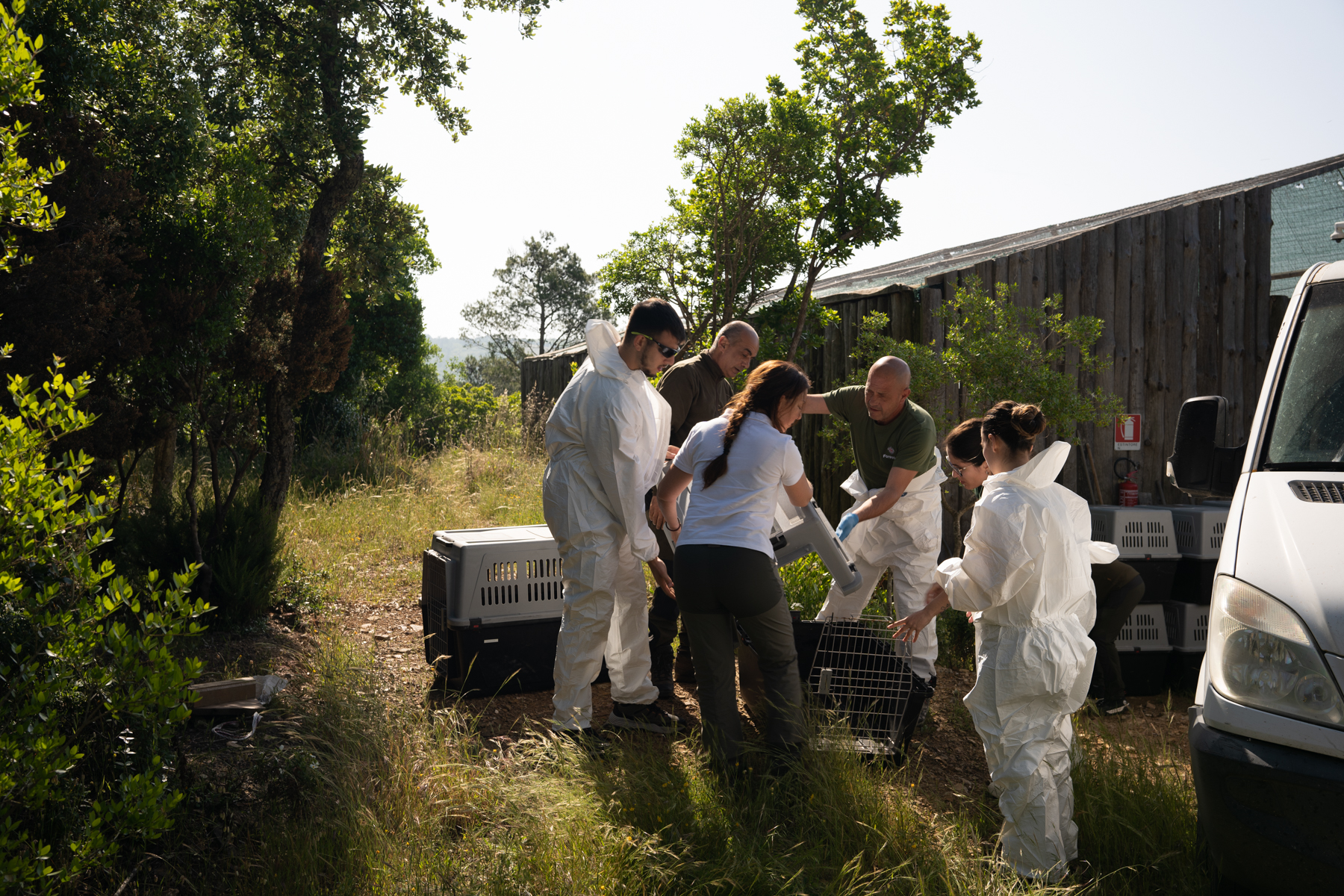
Exciting news for vultures continues in Bulgaria, with a record number of Cinereous Vulture and Griffon Vulture pairs in the country. This achievement is the result of decades of conservation efforts across various regions, which have paved the way for a remarkable comeback of these two species.

Unprecedented number of nests in Bulgaria since Cinereous Vulture reintroduction
The Cinereous Vulture, listed as extinct as early as 1985 in the Red Book of Bulgaria and maintaining the same status in the 2011 edition, had not seen a single breeding pair until 2021. However, by 2024, the national population has surged to 18-20 pairs. Notably, 15-17 pairs, with at least 10 laying eggs, are situated in the two colonies Vrachanski Balkan/Ponor and Eastern Balkan Mountains (Sliven/Kotel), reintroduced there with the Vultures Back to LIFE, an EU LIFE-funded project, with local actions led by the Green Balkans and the Fund for Wild Flora and Fauna (FWFF), and with international collaboration by the Vulture Conservation Foundation and the Junta de Extremadura.
Additionally, two to three newly formed pairs have been reported in the Eastern Rhodopes, where a local reintroduction project for the species is underway, led by BSPB/BirdLife Bulgaria, Rewilding Europe and GREFA. However, breeding has yet to occur in this area due to the young age of the birds. With these figures, the Bulgarian reintroduced population of the species now represents a third of the Balkan Peninsula’s population, in addition to the autochthonous remote colony in Dadia, Greece, comprising 30-35 pairs.
First Cinereous Vulture pair nests in Sine Kamani Nature Park in 60 years

The first pair of Cinereous Vultures has nested in the “Sine Kamani” Nature Park, marking the culmination of nearly 30 years of conservation work. This achievement is particularly significant as it represents the first nesting of Cinereous Vultures in the nature park in nearly 60 years since the species was declared extinct in the area. The pair occupied an artificial nest constructed by Miroslav Enev of the “Kartal nest” Foundation. One bird, named Krushuna (PVC ring – NN), was released at the park, while the second bird is from the wild population attracted by the vultures released into the park. With this new pair, the total number of breeding pairs reaches 11. For such a rare species, each egg laid is invaluable, offering hope for the species’ return to the wild.
Griffon Vulture population surpasses 200 pairs
During the current 2024 breeding period, the Griffon Vulture has achieved a record number in the autochthonous colonies in the Eastern Rhodopes, totalling 138 pairs, where conservation actions are led by BSPB/BirdLife Bulgaria. Furthermore, reintroduced colonies comprise of 27-30 pairs in Vrachanski Balkan, 28-31 pairs in the Eastern Balkan Mountains, and 9-10 pairs in Kresna. Consequently, the national population has surpassed 200 pairs, now ranging between 202-209 pairs. The maintenance of a third of the national population of Griffon Vultures is attributed directly to the local reintroductions in the Balkan Mountains and Kresna, initiated and carried out by the Vultures Back to LIFE project. Additionally, some released birds have settled in the Eastern Rhodopes, North Macedonia, and Greece, reinforcing local colonies and contributing individuals to new ones. Moreover, birds from autochthonous colonies frequently visit and temporarily stay in newly established cores in the Balkan Mountains and Kresna during their roaming, enhancing the survival rate of individuals and subsequently returning to nest in native colonies.
The substantial increase in individuals, colonies, and occupied areas, coupled with intensive conservation measures, accelerates the population growth of both Griffon Vultures and Cinereous Vultures. These measures enhance their ability to locate food efficiently, communicate information about its availability, find partners more readily, and increase survival rates during roaming by encountering their kind and joining groups to gain experience when young or find mates when mature.
Looking ahead…
Griffon Vultures are currently being released in the Central Balkan National Park to establish a new nucleus/colony and in Kresna to bolster the local colony and reinforce the species’ population in North Macedonia. Additionally, over March this year, the first 9 Cinereous Vultures were brought to be released in the Kresna Gorge, aiming to repopulate the species in Southwest Bulgaria and North Macedonia. Their release is anticipated in the coming months.
In the near future, we aspire to reintroduce the Bearded Vulture, a symbol of Bulgarian nature protection. The last bird of this species was tragically killed in the Blue Stones. Our new project, Bearded Vulture LIFE, will implement several targeted actions, including a captive breeding programme, to eventually reintroduce the species.
The Bearded Vulture LIFE Project

The “Bearded Vulture LIFE” project is a comprehensive initiative, aiming to restore the Bearded Vulture and Cinereous Vulture across Bulgaria and the Balkans. With a budget of €5.17 million, co-funded by the European Union’s LIFE Programme, the project commenced in August 2023 and is expected to continue until 2030. Building upon the achievements of its predecessor, “Vultures Back to Life,” it is coordinated by Green Balkans, with five more partner organizations within Bulgaria, including the Fund for Wild Flora and Fauna, Foundation EkoObshtnost, EVN – Elektropradelenie Yug EAD, Severozapadno Darzhavno Predpriyatie – Vratsa, and “Sinite kamani” Nature Park Directorate. Furthermore, the project benefits from international collaboration, including the Vulture Conservation Foundation (VCF), responsible for the translocation and safeguarding of captive-bred birds secured for release. Additionally, the partner Milvus group is responsible for executing conservation efforts in Romania.

Source: Green Balkans and FWFF



